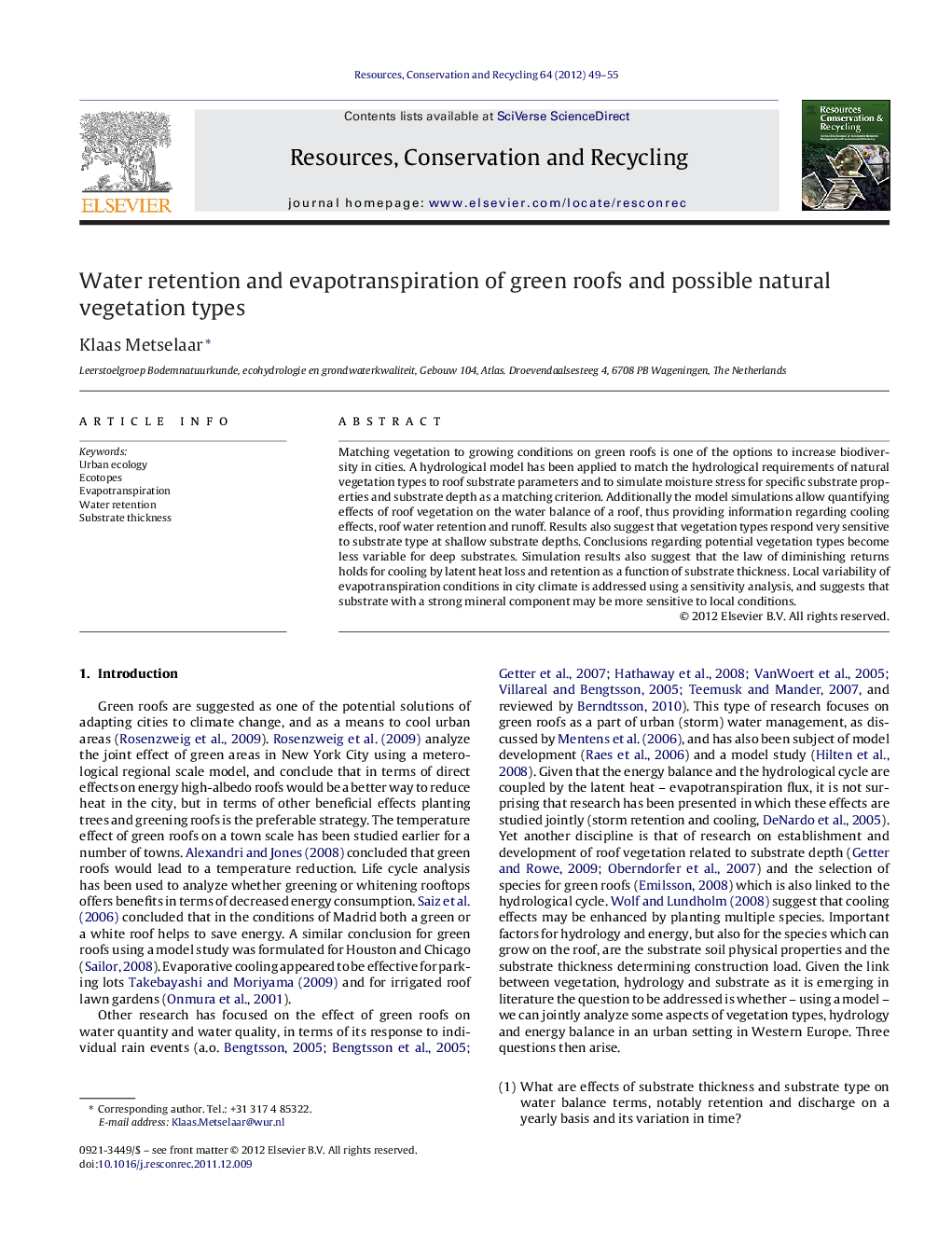| Article ID | Journal | Published Year | Pages | File Type |
|---|---|---|---|---|
| 1063219 | Resources, Conservation and Recycling | 2012 | 7 Pages |
Matching vegetation to growing conditions on green roofs is one of the options to increase biodiversity in cities. A hydrological model has been applied to match the hydrological requirements of natural vegetation types to roof substrate parameters and to simulate moisture stress for specific substrate properties and substrate depth as a matching criterion. Additionally the model simulations allow quantifying effects of roof vegetation on the water balance of a roof, thus providing information regarding cooling effects, roof water retention and runoff. Results also suggest that vegetation types respond very sensitive to substrate type at shallow substrate depths. Conclusions regarding potential vegetation types become less variable for deep substrates. Simulation results also suggest that the law of diminishing returns holds for cooling by latent heat loss and retention as a function of substrate thickness. Local variability of evapotranspiration conditions in city climate is addressed using a sensitivity analysis, and suggests that substrate with a strong mineral component may be more sensitive to local conditions.
